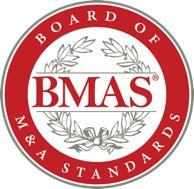High Performance Integration
By Jim Jeffries, Chairman of The M&A Leadership Council and a member of the Board of M&A Standards
When I established my consulting organization in hopes of improving the Integration practices of corporate buyers, extensive research made it clear that poor results in mergers and acquisitions were because of the lack of one or more key elements. I call these the Five Missing Links, and I’m confident that they remain true today.
- Formal orientation and training
There was virtually no training available at the time, and this became the primary reason for founding the M&A Leadership Council. All team leaders should go through one to two days of orientation and training just to develop a baseline of understanding the complexity, requirements and workflow for merging companies. A deeper dive is now available through The M&A Leadership Council's The Art of M&A Integration.
- Playbook
Any company who plans on doing a merger or multiple acquisitions should have a detailed, repeatable and well-documented process for the integration. It should incorporate best practices and be easily understood and articulated by the IMO and all integration team leaders. Additionally, playbooks that don't have the ability to flex with different “deal types” are of little use. There is not a single playbook that can be utilized for all deals because each one has its own challenges and complexities.
- Integration Strategy Summit
The management team needs to be fully aligned and in agreement on the roles and responsibilities for communications and launching the integration from announcement on. Otherwise, there is a good chance that value will begin eroding at the announcement. In-house trainng (such as The M&A Leadership Council's Game Day Workshop) is a critical investment to prepare the management team for each transaction. Clearly a nuanced best practice, but it is seldom if ever done.
- Governance
Many companies are still in the dark ages when it comes to transparency, tracking and communicating during the integration itself. Spreadsheets, teleconferences and meetings for updating are old practices. Management needs to leverage the new technologies available to get and stay on top of integration performance. Additionally, there are new best practices regarding maintaining discipline throughout the integration.
- Culture Fit
Based on the nature of the transaction, depth of integration and operating sensitivities, it is critical to investigate and discover where any potential “flash-points” may occur that would negatively impact the deal. Obviously, the target culture is a challenge to identify fully prior to close, but most companies fail to attempt any meaningful culture initiatives. Most companies who experience poor deal performance cite culture as the reason. It becomes the whipping boy for failure.
Learn about these Missing Links and more by joining us for The Art of M&A Integration in 2019. If your team is looking for training in 2018, there are still seats available for The Art of M&A Due Diligence in Scottsdale, Arizona, beginning November 6.
 About Jim Jefffries:
About Jim Jefffries:
Jim is chairman and co-founder of the M&A Leadership Council, a global organization delivering best-practice training to the M&A community. He spent 25 years leading consulting companies in performance improvement, private equity and M&A, providing advice to Fortune 1000 C-level executives on M&A valuations of more than $23B. Jim is a regular presenter at The Art of M&A training events provided by the M&A Leadership Council.

